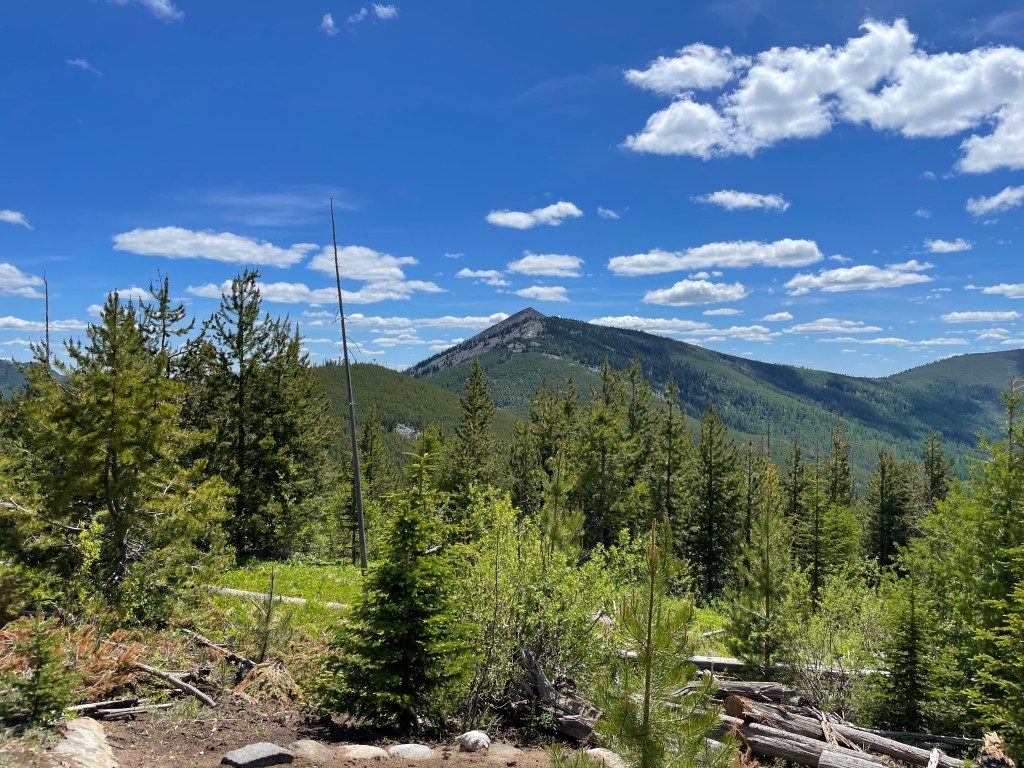Any time is a good time to look up from the creek bed at your feet to the mountains on the horizon.
David Boyles

By the time I was ten years old, our camping trips were mostly spent at Spirit Lake near Mt. St. Helens, that iconic mountain that would erupt in a cataclysmic event two decades later and forever change the landscape. At the time though it was idyllic. We loaded up our heavy camping gear in our small boat and took it across the lake to a campground called Donnybrook, which was accessible only by boat or trail. My father continued his daily hikes to high mountain lakes, but the leisurely strolls along the river with my mother and brother had come to an end. He preferred to stay at the lake, where he could swim and waterski with friends. I liked to swim as well, but my father’s mysterious adventures were growing ever more appealing. My mother put two lunches in the fishing creel that day, and we headed off on the trail for a hike over Independence Pass to Meta Lake.
The lake was small, surrounded by silver fir, and in a clearing by the shoreline were the remains of an old shelter and an outhouse. I found the door to the outhouse on the ground and hauled it to the lake, where I launched it as a raft, using a stick to push off. I floated through the lily pads, out to the center of the lake, where I waved at my father. He looked up from his fishing rod and shouted “Ahoy there!”
“Yes,” I said to myself. “This is going to be fun, adventures with my dad. Much better than water skiing.”
That evening I sat by the fire and gazed across the lake at the saddle horn shape of a mountain rising high above the northwest shore. “That’s Mt. Margaret,” my father responded to my unspoken question. “There’s a trail that follows that ridge line to the summit.”
“Let’s go there,” I said.
“It’s too long a hike to make it to the summit, but we can probably get to the ridge top where we’ll have a nice view.” The following morning my mother again prepared two lunches for my father’s fishing creel, and we started our long trek. The first part of the hike was familiar and followed the east shoreline of the lake. I had hiked it many times. But when we left the lake shore and began to climb above it, I entered a new world. I had experienced alpine scenery before on trips to Mt. Rainier but ascending this trail and watching the landscape change with every step was far better than a Sunday drive to the mountain. I watched the trees get smaller, the forest give way to meadowland, and a world of color open up: lupine, paintbrush, avalanche lily, marsh marigold, penstemon. The Douglas fir gave way to the stunted subalpine krumholz shrubs that spread across the ground, weathered mountain hemlock, and finally there were no trees at all, just the ridge, the flowers, the lake far below us.
The ridge line twisted and dipped. Streams flowed in the low spots. We did not carry water, nor did we have any kind of filter. Instead we knelt by streams, cupping the cold water in our hands and drinking deeply. Backcountry water filters did not exist, and running water was always presumed safe to drink.
Finally we made the steep ascent to the summit of Mt. Margaret, the high point of the trail my father had said was too far for a single day’s hike. He must have known I was not about to turn back without getting to the top of things. The trail seemed to have had little use and was washed out in places. At times we had to scramble on our hands and knees to make progress. From the summit most of the lake was visible, which sparkled deep green far below. The near perfect symmetry of Mt. St. Helens rose above the lake. Marmots whistled. Chipmunks chattered. A light breeze brought relief from the hot sun in this place where there was no shade to be found. At this point on our hike it became clear that the shorter route back to camp was to make a loop around the lake. We descended from Mt. Margaret, passing by the shore of St. Helens Lake and then descending to the highway, where we walked three miles on the shoulder to the trail that would lead us back to our campsite at Donnybrook. We had completed a seventeen mile loop by the time we returned to camp.
It was the longest hike I had ever taken, and I was tired but satisfied. Something in me had changed. In a couple of weeks I would return to school and the usual activities I enjoyed. . .friends, ballet lessons, and later boys, but I had a new focus that went beyond friends and school, something more elemental that would guide me for decades to come. It guides me still, as an old woman, and is not particularly complicated. I simply knew then that I wanted to spend as much time on wilderness trails as I could. Everything else in life would have to fill in the spaces around that central purpose.
High Country has always spoken to me in the same way. It makes me truly happy no matter what. Thanks for the great story. ❤️
Sent from my iPhone
>
LikeLike
You are welcome!
LikeLike
You have an old soul that lives on in your stories. Beautiful!! Thanks
LikeLike